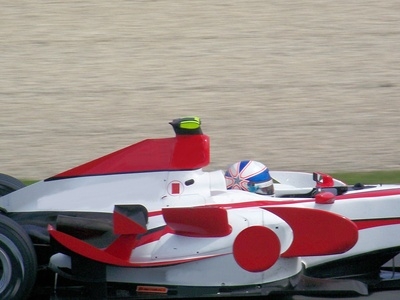
Descended from the multiple-carburetor setups commonly used on full-blooded race cars since the early 20th century, individual throttle body setups hearken to a time when few regulations governed the automotive world. These no-holds-barred induction systems are used on some of the most expensive and powerful engines on the planet, including those used in Formula One and Pro Stock Drag Racing.
Air must decelerate to stop or accelerate to go. Mass also means that it doesn't lose all of its inertia when hitting something, including the back of an intake valve. When the valve closes, the air's mass causes it to compress and bounce back with pressure in form of a sonic shockwave. When it hits something or reaches a certain point, the shockwave will turn around and race back toward the intake valve.
The term "volumetric efficiency" refers to an engine's ability to inhale air and fuel. Ideally, a 500 cubic inch engine would inhale 500 cubic inches of air per revolution, but pumping and efficiency losses drop that number down to around 400 cubic inches, which is 80 percent of volumetric efficiency. Installing a supercharger, which shoves more air into the engine. is one way to increase volumetric efficiency, but you can do the same thing with pressure waves. Open the intake valve at the very moment that the intake pressure wave turns around (reverts), and it will shove air through the valve opening for volumetric efficiency rates possibly in excess of 100 percent.
One major problem with taking advantage of pressure waves is that they only work at certain RPMs where the air intake speed coincides with the valve opening. One way to increase the frequency of pressure wave "bouncing" is to give the waves something to bounce off of that's close to the intake valve. Placing a throttle body close to the head's intake port accomplishes just such a task, but extreme care must be taken. Putting it too close will allow the pressure wave to bounce right out of the passage.
One major benefit to individual throttle bodies has to do with increased throttle response, which occurs for two reasons. The first is that rapid wave bouncing ensures that there's always enough pressure to cover the lag between when the throttle opens and when the valve enters the cylinder. The second is that a normal manifold has an large open area ("plenum") just ahead of the intake runners. When the throttle opens, that area must de-pressure before any extra air can enter the cylinders. The individual setup leaves little space between the throttle body plate and intake valve, making throttle response almost instantaneous.
Other than cost over single-throttle body setups, individual setups have few drawbacks. They don't always play well with stock engine management computers, and absolutely will not work with manifold air pressure injection systems. You can run a turbo or supercharger with individual setups (take a look at the RB26DETT engine in an old Nissan Skyline), but you'll need to install a plenum to link the throttle body intakes.